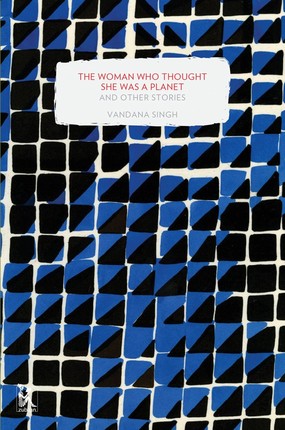The Woman Who Thought She was a Planet and Other Stories
Beyond the claustrophobia of the exclusively human

In the title story, a woman puts down her cup of tea with a crash and announces to her husband: “I know at last what I am. I am a planet.” She doesn’t want to dress because the planets don’t. The helpless husband finally persuades her to put on a gray sari, because “even planets have atmospheres.” His perplexity turns into panic when, at night, he witnesses the “dark stuff...gathered about her mouth, on her chin, like a jelly...not blood but composed of small, moving things”.
In The Tetrahedron, a strange object appears in the middle of a busy road in Delhi. People who enter it are found months later, wandering in the desert, with no memory of what happened. In Infinities, an old maths teacher is obsessed with understanding the infinite and is encouraged by the angels that he sees out of the corner of his eyes. In Delhi, a man imagines a futuristic Lower Delhi (Neechi Dilli) where the poor, the criminal and the dispossessed live underground in the tunnels of the Metro.
Vandana Singh, the first Indian female speculative fiction writer, says that her stories offer a chance to step out of the claustrophobia of the exclusively human and discover joy, terror, wonder, and meaning in the greater universe. They “revolve around anyone but a white man is too much of a leap,” observed Jess McCabe in her review. “Mainstream sci-fi writers are all too often engaged, as Singh puts it, in writing 'Westerns and the White Man’s Burden in Outer Space'”. Also, her book is not entirely set within the realm of space travel or time travel as most speculative fiction is; it’s equally about the inner lives of her characters.
The Woman Who Thought She was a Planet is rich and mysterious. It effortlessly taps into the weird and the strange, the unconscious and the invisible – realities which cannot be easily accessed through traditional ways of seeing and expressing.
Published in 2009.














